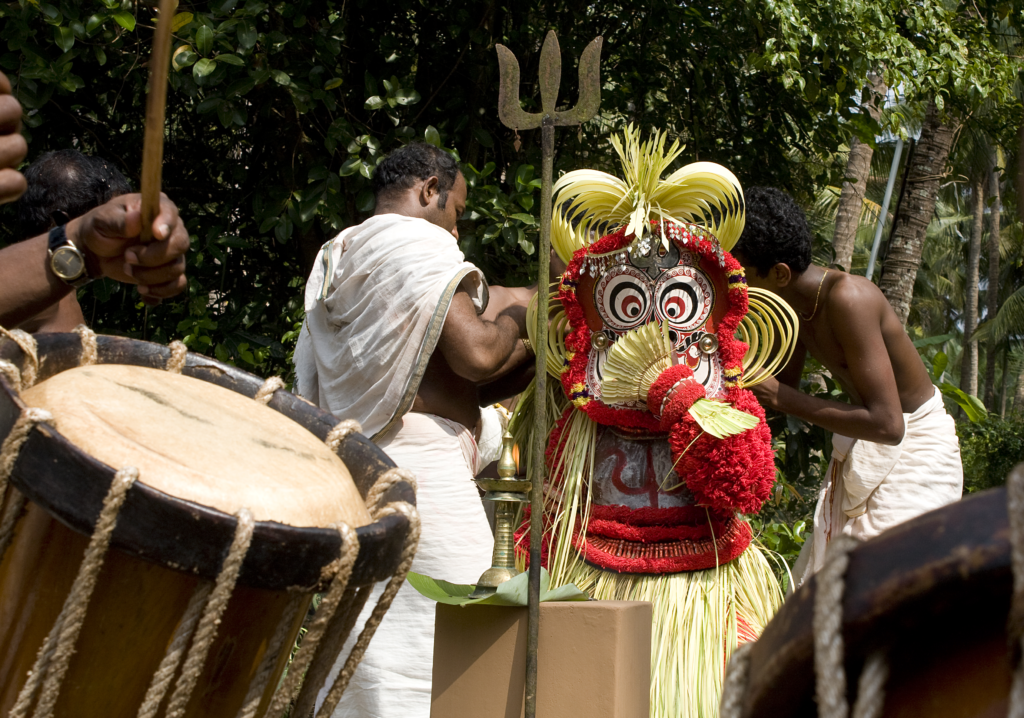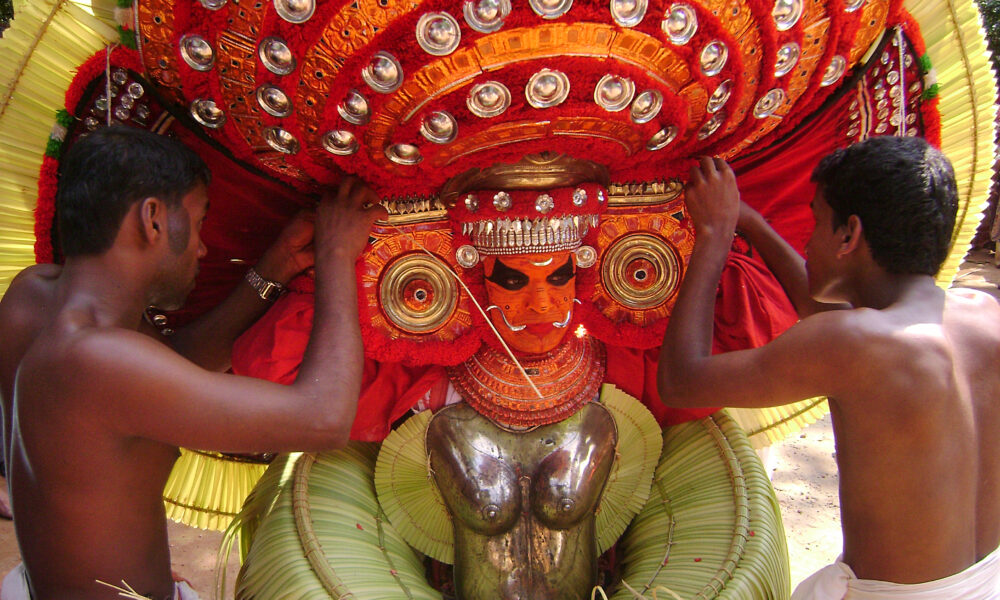Being born and brought up in North Malabar and having travelled across the length and breadth of the country being a spectator to so many art forms, Theyyam seems to be one of those art forms I recall watching in awe and oomph!
An art form with tenaciously selected progressions of human movement, Theyyam has both artistic and emblematic value, characterized by its place of origin.
One of the most enchanting and time-honoured ritualistic dance worship forms of North Kerala, the dance worship form is a huge crowd puller. An outstanding folk art deep-rooted in divinity, tantamount with communal harmony, Theyyam appeals to all kinds of people. Prevalently called the Dance of the Gods, the dance is an amalgamation of custom, choral and instrumental music, mime and even literature. The dance form transports its viewers to an entirely different world as it personifies legendary stories from the past.
The dance performed from Thulam (10th month of the Malayalam Calendar), i.e., October/November, closes by the end of June. From December to April, there are Theyyam performances in many temples in Kannur and Kasaragod. In North Malabar, Theyyams are performed annually and draw huge crowds.

Theyyam is commonly performed in front of the village shrine or groves and in the open. The performers belong to different communities like Malayan, Vannan, Mavilan, Munnoottan, Velan, Pulayar, Kopalar, and Anjunnoottan, among others. Dancers adorn themselves in costumes called ‘Theyyeyakolam’ and heavy makeup and have a striking look sure enough to keep the spectators hooked to the dance form. The curios, headgear, and ornaments are regal and sturdy to create a mood of marvel, fright and admiration.
Many rituals inspire Theyyam performances. The date of enactment is fixed after the performer (Kolakaran) is given intimation about the same. The first part of the Theyyam performance, known as Vellattam or Thottampattu, is performed without an elaborate costume but with a painted face and tuft of hair on the head of the Kolakaran. The performer recites the derivation and descriptions of different Theyyams.
The Kolakaran and his assistants, participate in it. Each Kolakaran represents a hero with great power. In some Theyyams, the Vellattam is replaced with the ritual of receiving the Podiyila. The musical instruments used in this noble art forms are Chenda, Veekan Chenda, Kurumkuzhal and Ilathalam.
The chief rituals include mantra ritual, strategic ritual, and foul ritual. Muchilot Bhagavathi, Kannankattu Bhagavati, Vishnumoorthi, Puliyoor Kali, and Puliyoor Kannan are the common deities of the ritual art form. Though different deities are associated with the art, Muchilot Bhagavati is considered the principal goddess. Each God or Goddess will have dissimilar chronicles to relate.
